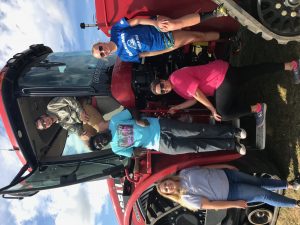When hearing the term, “family farm,” I never imagine anything to the scale or national success that I witnessed at Fifer’s Orchards. Fifer’s Orchards is a fourth generation family farm, starting in the 1900s with 200-300 acres. Since then, the Fifer family has expanded and developed their orchards into just under 3000 acres of land tilled.
Being from a city in Connecticut, my knowledge of crops basically went as far as the grocery store before coming to the University of Delaware. The opportunity to tour a farm of such magnitude helped to further my knowledge, and I was truly amazed with each thing I learned. Strawberries are one of the main crops grown on Fifer’s land, and they are planted in raised beds. This is to keep the beds up above water that may naturally collect in the field, and the plastic covering surrounding the beds allows better heat conservation and transfer when it is appropriate. Even more interesting is that each bed has a drip tube irrigation system running within it, which allows the plants to receive the water that they need without subjecting the body of the plant to the diseases and pests that can come along with traditional crop watering. Once these strawberries are mature, they are handpicked, and sent up and down the East Coast.
One of the best things about Fifer’s Orchards is that while they are a million dollar business, they still keep their local community in mind. In fact, on the weekend we visited, Fifer’s was actually having the first weekend of its annual six week Fall Festival. In addition the this festival, Fifer’s Orchards reaches out to and serves the community through the Community Supported Agriculture program they run twice a year. This program allows families and individuals to sign up to receive a weekly box of Fifer’s produce and other locally grown or raised food products. There are pick up locations throughout Delmarva, and the program runs May-Labor Day and November-Christmas. The boxes come in large, small, or customized, and it is a great way to not only get your groceries, but also ensure you’re eating healthy while supporting local businesses!





